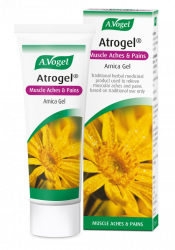What is the best type of exercise for back pain?
Tight hamstrings and/or tight hip flexors (muscles at the front of the pelvis) are an extremely common cause of mid back pain. Similarly, upper and middle back pain is also often related to an inflexible lower back or hips that tilt forwards (also known as sway back because it causes a hollow lumbar region).Gentle non-impact, low intensity exercise can help relieve back pain.
Start out with walking and gradually build yourself up to different types and intensities of exercise. As I discuss in my blog ‘Is your hip pain related to your back strain’ back pain (and other pains) can often arise as a result of weaker muscles in another area of the body. When this happens a whole bunch of work that these muscles are supposed to carry out gets dumped onto another area of the body. Over time this can result in pain and stiffness and often uncertainty about where our pain originated or why.
For back pain strengthening the abdominal and back muscles can help to stabilise the spine, cat/cow is one particularly good stretch for doing this. The cat/cow movement helps to relieve stiffness in all regions of the back by gently moving and developing flexibility in the spine. Watch the video below for instruction on how to do this easy stretch, and be sure to only take it as far as feels comfortable!
Water is another great shout for back pain so, if you’ve got back pain, swimming is often a great option particularly as it doesn’t involve weight bearing or high impact on the joints. The water can offer gentle resistance helping to slowing build up strength and flexibility. Swimming also helps to provide your entire body with a workout, not just your back. This is extremely important for preventing future aches and pains from cropping up!
Breaststroke and backstroke are thought to be the best styles of swimming for back pain as they involve minimal twisting of the torso. It is also worthwhile investigating if your local swimming pool holds regular aqua aerobics classes as these often contain beneficial exercises for back pain. For more information on how swimming can be beneficial for back pain check out my blog ‘Lower back pain? Don’t take paracetamol, go swimming!’
Benefits of exercising for back pain:
• Improved blood flow and circulation which helps to reduce inflammation and provides more nutrients to the area
• Better mobility and flexibility
• Exercise produces endorphins which are your body’s natural pain killers which can help relieve pain and make us feel good too. Even 10 minutes of exercise is enough to produce some endorphins!
• Reduction in stress and anxiety levels which can both contribute to inflammation and more pain
• Strengthens our muscles making injury and pain less likely in the future.
Easy exercises for upper and middle back pain to try at home:
a) Hamstring stretches - best done lying on your back, leg extended vertically and a towel looped around your raised foot, held at both ends. Feel the stretch behind the knee as you relax your legs to as straight a position as possible. Hold for 30-60 seconds.
b) Hip flexor stretches - lie on your side, straight, and grab the foot of the upper leg behind your bottom. Focus on pushing your hips forward. Hold for 30-60 seconds. Be sure to support the head with a pillow or towel.
c) Thoracic Extension - lie on your back with a hand towel rolled up lengthways and underneath the length of the spine. You’ll need to remain in this position for 10 minutes but enjoy the relaxation! Be sure to support the head with a pillow or towel.
d) Thread the Needle - on all fours, reach one arm behind the other, under the body until it is as fully extended to its opposite side as is comfortable. Repeat slowly 10 times each side. Avoid rotating the hips.
e) Thoracic Rotation - lie on your side, support the head with a pillow or towel. Bend both knees so your legs are forward of your hips. Reach both arms fully in front of you so that both palms are together. Take the top hand and, in a large arc, reach slowly all the way behind you so that you’re aiming to get your shoulder blades onto the floor. Do not rotate the hips, keep the knees together.
All of this takes around 30 minutes but you should see improvement in 3-4 sessions. Before you attempt any of these exercises for yourself it’s important to get confirmation from a doctor, physiotherapist or other body movement specialist that exercise is the best option for you at this time.








